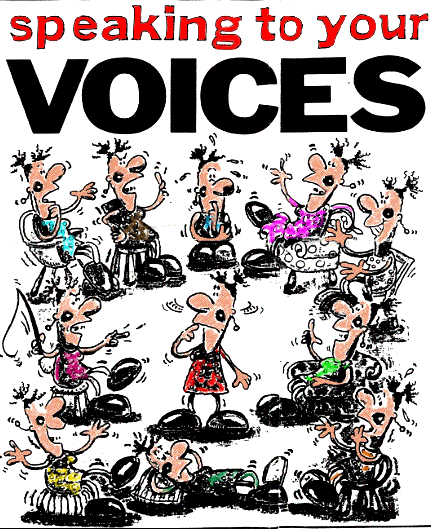
1.Two persons participate in the Voice Dialogue process. One is the facilitator and one is the subject.
2.The facilitator first establishes rapport with the subject and determines, together with the subject, what areas might be explored and what subpersonality they might start with.
3.When both are ready, the facilitator asks the subject to physically move to another chair (or to another location in the room) or to move the existing chair to a new place in the room where the subpersonality is "located". This is a subjective choice on the part of the subject.
4.The facilitator then begins a conversation with the subpersonahty that can last from a few minutes to an hour or more. No attempt is made to judge or change the subpersonality that is being facilitated.
5.After the work is completed, the subject is asked to return to the place where he or she was originally sitting. From this place a discussion occurs about what has been done.
6.As part of this discussion, the subject is asked to stand in the position of awareness while the facilitator summarises the work that has been done.
7.It is possible for the facilitator to move the subject to another subpersonality and hence another seat or location before returning to the original position. Or, having done the summary, it is possible for the facilitator to continue the work by talking to a different subpersonality.
8.The determination of which selves to work with, when to work with opposite energies, how many selves to work with, and how deeply to take the subject is a function of the training and experience of the facilitator. Voice Dialogue is not a parlour game and should not be used without appropriate training.
9.In the course of this work, no attempt is made to judge or change a self that is being facilitated. Also, the facilitator does not have the different selves talk to each other. We do not try to have the selves reconcile their differences with each other. Rather, our aim is to develop an awareness of them and to develop an Aware Ego that can embrace them in their uniqueness and their totality, no matter how different or opposite they may be.
10.The Voice Dialogue process can be used in relationship to any therapeutic system. What determines its power and its difference from other ways of working is the ability of the facilitator to 'hold the energy' of the part being worked with. This requires focus and concentration. It also requires that the facilitator must have experienced in himself or herself similar parts that are being facilitated. This contributes a lot to gives the subject the total reality of each self.